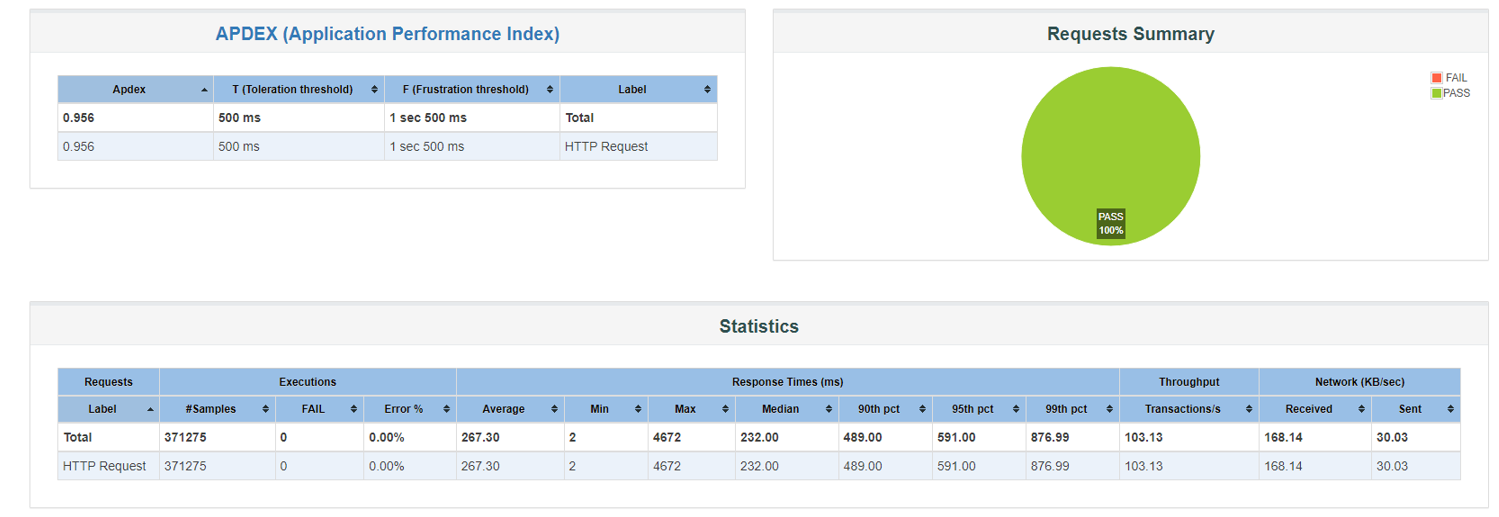Our DOTS Address Validation – US service is one of our most powerful and popular services, with tens of thousands of validations being processed every day. This service allows users to directly integrate a validation service to continually verify and correct postal address data, ensuring your customer’s addresses are genuine, accurate and up-to-date. This results in improved contact rates, accurate package and mail deliverability, billing accuracy, increased marketing success while helping detect and prevent fraud.
Service Objects’ industry expertise ensures excellent performance through fast response times, bank grade security, uptime guarantee and reliable functionality. To ensure we deliver on these performance standards, we regularly perform a series of load and stress testing. This blog delves into the results of load and stress testing conducted on our Address Validation – US service. We analyze the performance statistics obtained from both stress and load testing, providing valuable insights into the service’s scalability and responsiveness.
Stress Testing
- Test Design
In the stress test, Address Validation – US was subjected to the unlikely scenario of 200 simultaneous users, who sent concurrent requests to the service. The test ramped up to 200 simultaneous users over 2.5 minutes, then sustained the stress until the end of the test. This test was designed to assess the system’s behavior under peak load conditions. - Ramp-Up and Response Time
During the 2.5-minute ramp-up period, the average response time increased from approximately 250 ms to around 2000 ms once all 200 users were actively sending requests. The considerable spike in response time highlights a potential bottleneck when our US address verification service operates under maximum capacity.
- Stressed Performance
After reaching the peak load of 200 simultaneous users, Address Validation – US successfully sustained this load without any failures. The average number of transactions per second remained at 100-110 throughout most of the test.
- Breaking Point Analysis
Based on the stress testing results, we can conclude that the service did not reach its breaking point. Although response times increased significantly, the absence of any failed transactions indicates Address Validation – US’s resilience. However, the prolonged response times are undesirable and provide further motivation for us to always be alert on ways to optimize the service performance, which we are constantly researching and practicing. In practical terms, considering it is highly unlikely that our US address verification service would experience 200 simultaneous users hitting the same service at the same time on a typical day, it is extremely unlikely to encounter transactional failures due to excessive stress. This test demonstrates that under normal usage, our Address Validation – US product can handle demanding scenarios with ease.
Load Testing
- Test Design
Unlike stress testing, load testing focused on sustaining a consistent load. In this test, Address Validation – US was subjected to 30 simultaneous users, who sent concurrent requests to the service. The test ramped up to 30 simultaneous users over 10 minutes, then sustained the load for an hour. - Apdex Score and Tolerance Thresholds
The load test achieved an impressive Apdex score of 0.956, indicating a high level of user satisfaction. The toleration threshold of 500 ms and the frustration threshold of 1500 ms set for this test shows US address verification responsiveness under moderate load conditions. Out of approximately 370,000 transactions during the one-hour load test, every single request was successful, yielding a 100% success rate. This exemplifies the reliability and accuracy of our Address Validation – US service.
- Response Time Distribution
The average response time recorded was 267 ms, which is well within acceptable limits for most applications. The P95 (95th percentile) response time was 591 ms, indicating that 95% of transactions experienced a response time below this threshold. Even the P99 (99th percentile) response time was 877 ms, suggesting excellent performance even for most edge cases. Most responses (91%) fell under the 500 ms mark, ensuring a smooth user experience. A small portion (8%) experienced response times between 500 ms and 1500 ms, which may still be acceptable for certain use cases. A negligible amount (0.07%) encountered response times over 1500 ms, which can be further optimized to minimize such occurrences.
Conclusion
Through rigorous stress and load testing, we have gained valuable insights into the Address Validation – US services’ performance. Under stress conditions, our Address Validation – US service exhibited remarkable resilience by handling peak loads without failing any transactions. The response time spikes observed are certainly not to be expected for normal usage, and we are constantly looking for new ways to optimize the performance of our services.
In load testing, Address Validation – US displayed exceptional responsiveness, delivering prompt and accurate results for all transactions. The impressive Apdex score further underscores the product’s reliability and user satisfaction.
Overall, this analysis assures users that our Address Validation – US service is equipped to handle demanding situations effortlessly while maintaining optimal performance during normal usage. These statistics bolster its reputation as a reliable and efficient address validation solution.













